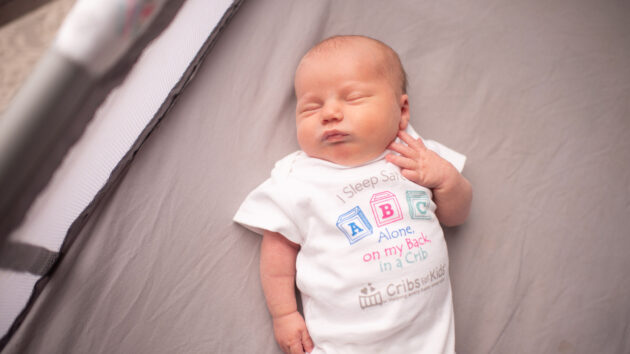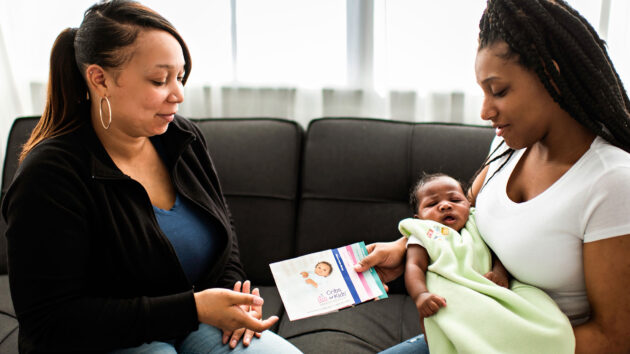Infant Safe Sleep
Keeping Your Baby Safe
The CDC estimates that nearly 3,400 infants die suddenly and unexpectedly each year due to something called Sudden Unexpected Infant Death (SUID). The three most commonly reported types of SUID’s are Sudden Infant Death Syndrome (SIDS), Accidental Suffocation and Strangulation in Bed (ASSB), and unknown causes.
It is important that parents and caregivers always choose a safe sleep environment. Where and how your baby is placed to sleep is vital to infant safety.
The American Academy of Pediatrics developed the ABCs of Safe Sleep, which makes for an easy way to remember the basic guidelines for how to keep your baby safe:
A - ALONE
B - On their BACK
C- In their CRIB
Recommendations for Safe Sleeping
- Place your baby on their back for every sleep, including naptime and nighttime.
- Keep your baby’s head and face uncovered during sleep.
- The crib should not have any pillows, bumper pads, loose blankets, or toys.
- Use a firm mattress in a safety approved crib, bassinet, portable crib, or play yard covered by a fitted sheet. Make sure what you are using meets the safety standards of the Consumer Product Safety Commission.
- Dress your baby in sleep clothes, like a one-piece sleeper or wearable blanket.
- Wedges and positioners should not be used.
- Never place a crib near a window with blinds, curtain cords, or near baby monitor cords to prevent strangulation.
- Never place your infant to sleep on a couch or armchair.
- If your baby uses a pacifier, use one that is not attached to a string for naps.
- Breastfeed your baby (Studies have shown that breastfed infants have a lower risk of SUID).
- Share your room, not your bed! Bed sharing increases the risk of suffocation.
- Share a room (but not a bed) with your baby for at least the first six months.
- Do not smoke or allow others to smoke around your baby.

